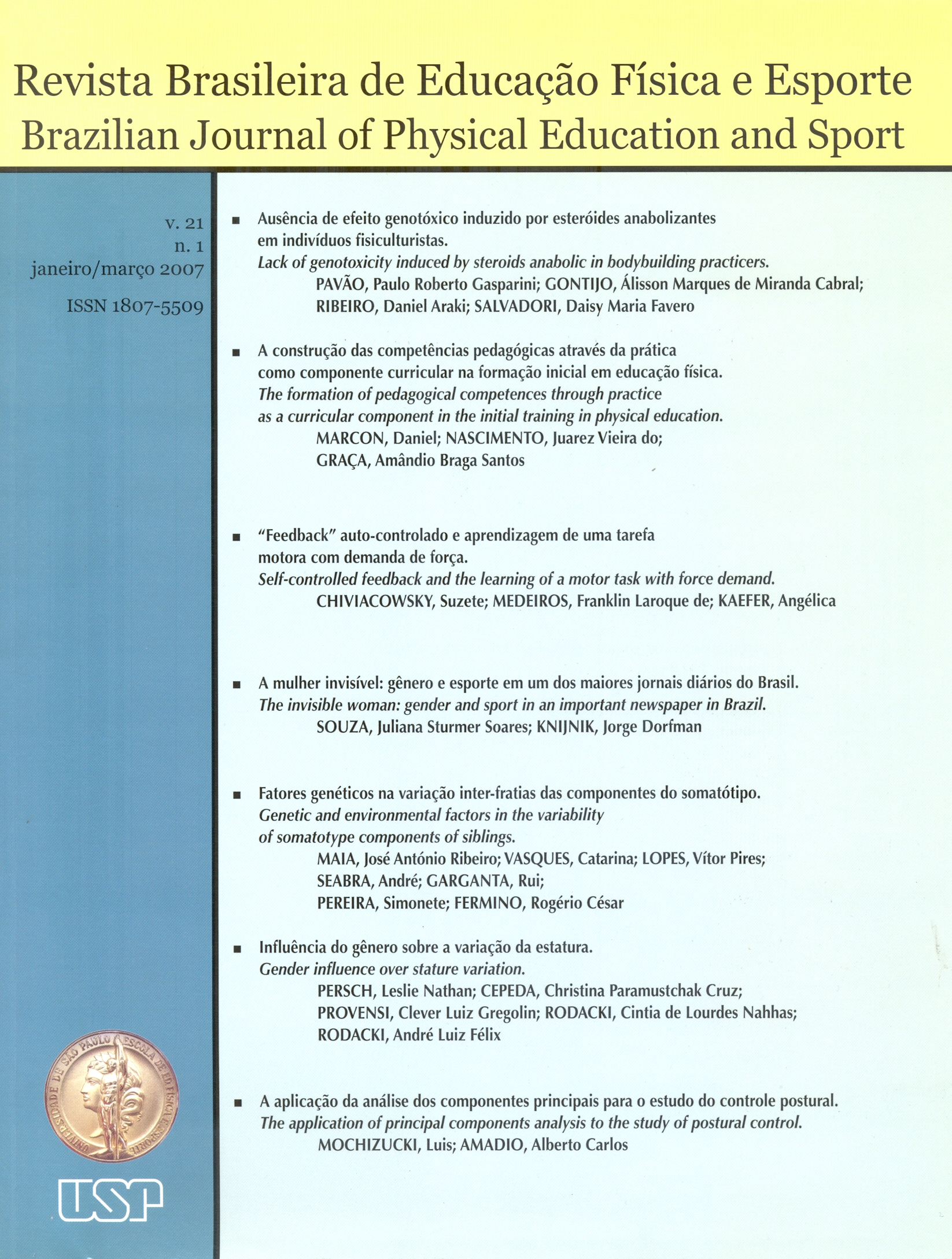The application of principal components analysis to the study of postural control
DOI:
https://doi.org/10.1590/S1807-55092007000100007Keywords:
Postural control, Principal components, Biomechanics, Postural adjustment, GymnasticsAbstract
The purpose of this study is to apply the principal components analysis to the study of anticipatory (APA) and compensatory (CPA) postural adjustments. We made use of a force plate to measure center of pressure (COP) and moment of force (M) during standing, and an electromyography (EMG) system to measure the myoelectric activity of right and left mm. tibialis anterioris and right and left gastrocnemius lateralis. The subjects were 43 healthy children divided into three groups (non gymnast, Intermediate gymnast, and advanced gymnast). They performed the left leg rising as fast as possible to stand at one foot with opened or closed eyes for 2 s. We analyzed the center of pressure (COP), moments of force (M), ground reaction force (GRF), and EMG during APA and CPA. With eyes opened, the accounted variance of M and EMG were affected by group and postural adjustment conditions. With eyes closed, the accounted variance of M, COP and EMG were affected by group and postural adjustment conditions. At last, the dimension number of each variable was smaller than the number of components. For all variables, nearly all their accounted variance was due to the first principal PC1; and for the groups, the accounted variance increased with gymnastic experience.Downloads
Download data is not yet available.
Downloads
Published
2007-03-01
Issue
Section
naodefinida
License
Todo o conteúdo da revista, exceto onde está identificado, está licenciado sob uma Licença Creative Commons (CC-BY)
How to Cite
Mochizuki, L., & Amadio, A. C. (2007). The application of principal components analysis to the study of postural control . Brazilian Journal of Physical Education and Sport, 21(1), 69-80. https://doi.org/10.1590/S1807-55092007000100007


